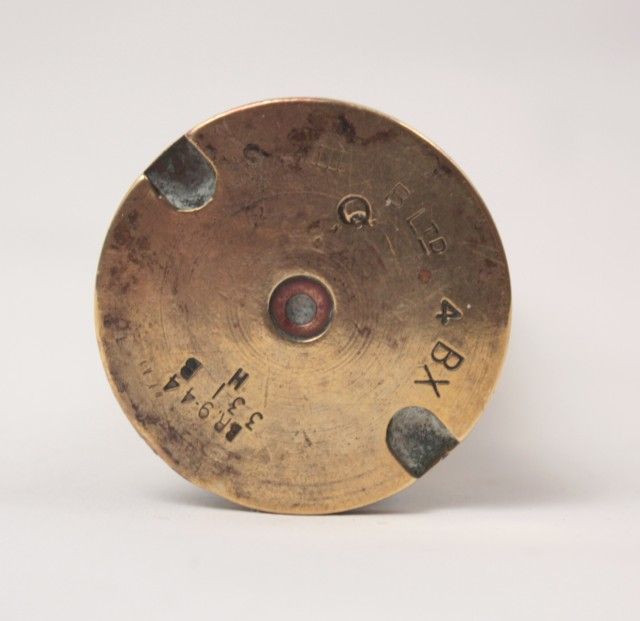You have a nice example of a World War Two percussion primer. I don't know exactly which model yours is. I don't think it's a No 1 primer, as these were much shorter than yours. It might be a No 9, No 11 or No 12 as used with 25 Pr ammunition. Those may also have been in use with other calibres that used a cartridge case. The external screw thread indicates that it was screwed into its parent cartridge case (some others eg the US M28 percussion primer used in 105 mm Howitzer are push fitted into the cartridge case). The main body or magazine would have been filled with gunpowder. I believe the gunpowder was enclosed in celluloid to keep it waterproofed. After WW2 the UK army still used percussion primers but with the introduction of the 105 mm Field and light guns (1970s?) the L10 electric primer came into service. The 25 Pr gun was still in use but by the 1980s was only used for training. The 25 Pr gun and 5.5 inch (approx 140 mm) howitzer were standard UK army artillery pieces of WW2. Howitzers tend to be heavier calibre and use bagged propellant charges that require ignition by a `Tube', doing away with the need for expensive metal cases. When I was a soldier (1978 -1993) the UK army's standard light artillery was 105 mm calibre, using brass cartridge cases fitted with primers. Heavier artillery were 155 mm, 175 mm and 8 inch howitzers, all using bagged charges ignited by tubes. The 8 inch howitzers were replaced by MLRS in UK service, just in time for the first Gulf war, although some 8 inch howitzers were also sent to the Middle East at that time. I think that the 175 mm howitzer was also superceded by MLRS. The 105 mm guns were replaced in all but a light / airmobile(?) role by the 155 mm FH70 (using a small tube - the DM 191 - to ignite the bagged propelling charge). By the time I left MLRS and 155 mm Howitzer were the UK's main artillery weapons. With heavier calibres, longer ranges and improved weaponry the weight of fire and lethality that can be brought to bear on a target is immense. I would imagine that one modern weapon can do as much damage as an entire battery of WW1 artillery weapons. Thanks for showing the primer.









